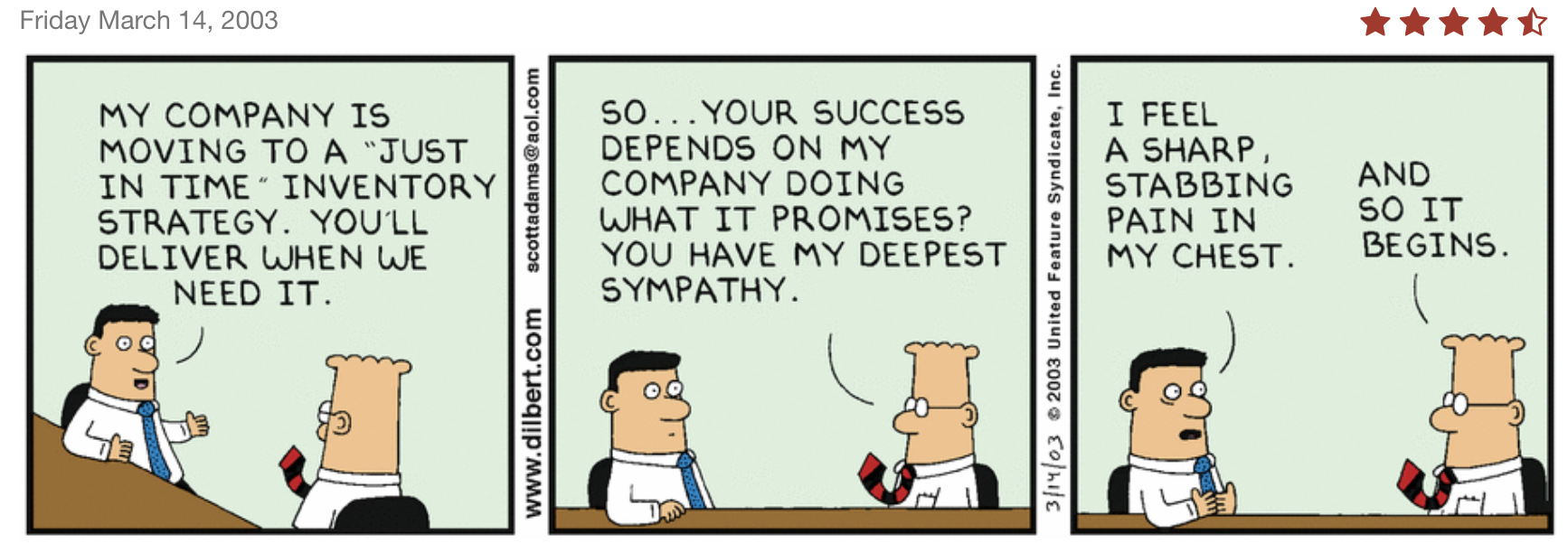
Background:
What dictates success or failure for a Just-in-Time system?
As of late we have seen numerous events derail the best efforts of Supply Chains & Just-in-Time inventory systems, to say the least. In some worst case scenarios we have seen the Supply Chain & inventory systems completely break down. Some say this will bring about a shift away from Just-in-Time inventory practice to more of a Just-in-Case system or bring back the old notion of safety stocks.
The performance of a firm's supply chain & especially a firm's Just-in-Time sytem are based on the performance of the larger supply chain & invenotry systems of your suppliers & customers. The cartoon alludes to this in a comical manner as Dilbert suggests that his customer's success really depends on how well his firm will perform. With that said here are some questions to ponder:
Questions for Thought:
2. Supply chain managers know the trade-off between managing risk versus managing resiliance. Managing risk can be defined as the ability to minimize or quickly recover from a disruption whereas managing resiliance is the ability to be prepared for the disruption & weather it overtime. JIT inventories tend to exacerbate the ability to manage risk & lead to shortages when a crisis erupts. Resiliance lends itself to bigger stockpiles, more workers, more slack in the system & will assist when the crisis erupts but leads to higher operating costs. Can you think of an example of a company managing risk versus managing resiliance?
3. Are their inherent disadvantages to JIT? What do you think they would be? What about Just-in-Case &/or higher safety stocks? How does a firm create a balance? Or maybe the customer/cosumer must also create a balance? Your thoughts?